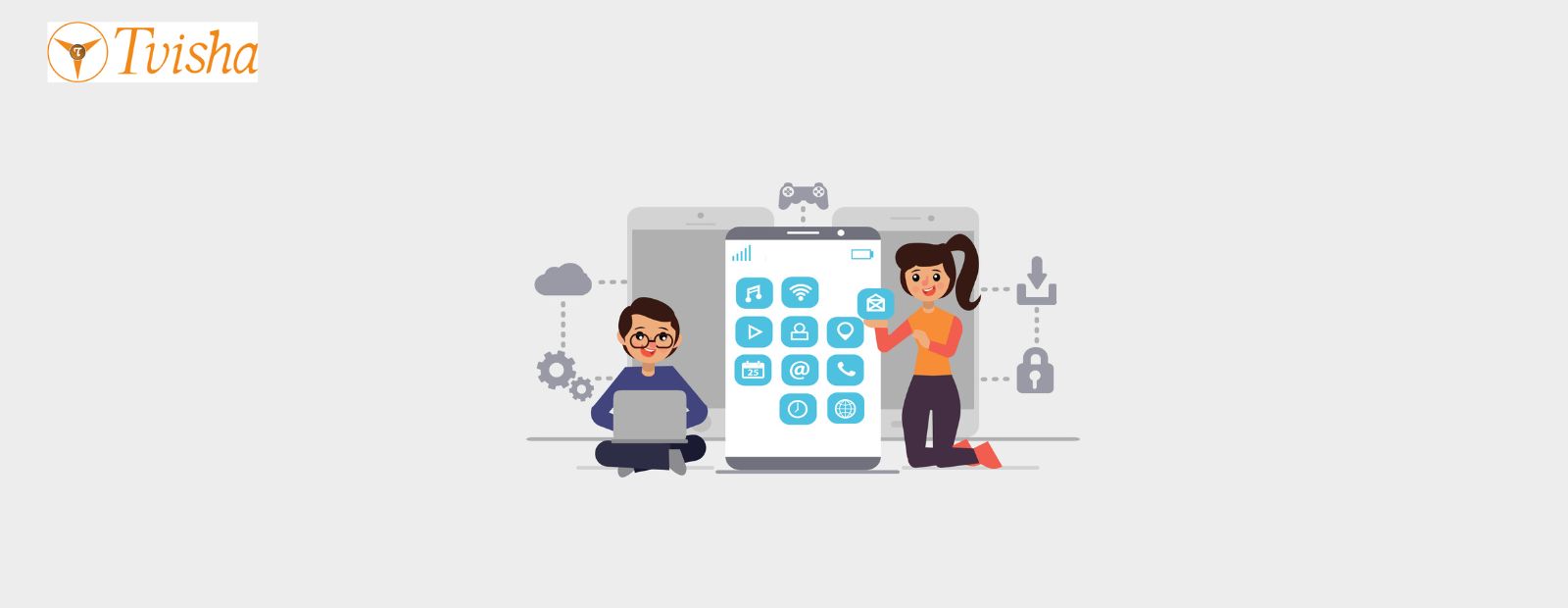
Agile Model: A Modern Approach To Software Development
In today’s development world, every company always tries to provide its clients with the best solutions. In this process, most companies opt for the Agile software development process because by using this, they can develop and deliver the product that clients need at any time.
Agile Model is a methodology of modeling and documenting software systems based on best practices. Agile refers to something quick or adaptable. Since the existing methods were complicated, unresponsive, and in response to requirements and environmental change, the Agile Model began to merge in mid- 1990s.
What is Agile Model?
It is a collection of principles and values that can be applied to a software development project. This methodology is relatively more flexible than traditional models. The Agile models divide projects into smaller iterations or sections to avoid long-term planning.
The project's scope and requirements are defined at the start of the development phase. The number of iterations, duration, and scope of each iteration are all determined ahead of time.
The software development life cycle (SDLC) involves designing, developing, and testing high-quality software. The chief aim of SDLC is to produce the finest software that fulfills the customer requirement within time and estimated costs.
Agile Model Software Development Life Cycle (SDLC) is the blend of incremental and iterative process models. The Agile life cycle model focuses on process adaptability and customer satisfaction through rapidly delivering working software products. It breaks down the product into small tasks. These builds are provided in iterations.
Importance Of the Agile Model:
- It helps to ensure that the developers complete the projects on time and within the budget.
- The Agile process model is more flexible than the other methodologies.
- They can help to reduce the tasks associated with complex projects by breaking them down into smaller sprints.
- They lead to increased customer satisfaction as the customer is involved in the development process and can provide feedback at each stage of the project.
Agile Manifesto:
The Agile Manifesto is a document that recognizes 12 principles and four fundamental values that its authors trust software developers should use to conduct their work. Formally known as the Manifesto for Agile Software Development, 17 developers produced it during an outing on 11-13 February 2001 at The Lodge at Snowbird ski resort in Utah.
The developers of Agile Manifesto called themselves the Agile Alliance. They were seeking an alternate software development process as they found existing ones overly complicated, unresponsive, and too focused on documentation requirements.
The four core fundamentals values of the Agile Development Model are:
- Individuals and interactions over processes and tools.
- Working software over comprehensive documentation.
- Customer collaboration over contract negotiation.
- Responding to change over following.
Principles of the Agile Model:
- Customer satisfaction through early and continuous delivery of valuable work.
- Breaking down work into smaller tasks to complete them quickly.
- Recognizing that best work emerges from self-organized teams.
- Providing the right environment and support needed and trusting the individuals to do the job.
- Promote sustainable efforts by creating processes.
- Maintaining a constant pace.
- No matter if it's late in the project, accept changes in requirements.
- The developing teams and project owners interact throughout the project on daily bases.
- At regular intervals, the teams must reflect on how to become more effective and implement it.
- Working software is the main measure of progress.
- Continuously seeking excellence.
- Harnessing change as an advantage.
Phases of the Agile Model SDLC:
- Planning: In this phase, the Agile team establishes project goals, identifies the customer's requirements, defines the project's scope, and creates a plan for the project's execution. Using a weekly planner can help break down these tasks into manageable chunks and ensure that project milestones are met effectively.
- Requirements Analysis: During this phase, the Agile team works with the customer to determine the specific features and functionality required for the project.
- Design: In this phase, the Agile team creates a detailed plan for the software system that meets the customer's requirements.
- Development: During this phase, the Agile team builds the software system incrementally, delivering small working features in each iteration.
- Testing: In this phase, the Agile team tests the software system to ensure it meets the customer's requirements and functions as expected. Automation testing tools are pivotal in the testing phase, as they enable teams to maintain the pace and efficiency required for Agile cycles. Tools like Functionize, Selenium, and Appium from the automation testing tools list, are commonly integrated into Agile workflows for consistent, rapid, and reliable testing.
- Deployment: During this phase, the Agile team deploys the software system into the production environment.
- Maintenance: In this final phase, the Agile team provides ongoing care and support for the software system to ensure it functions correctly and meets the customer's needs.
Agile Model Advantages and Disadvantages Are:
Advantages of the Agile SDLC:
- The project is divided into short and transparent iterations called sprints.
- It has a flexible change request process.
- It minimizes the risk of software development.
- Quick release of the first product version.
- The correctness of functional requirements is implemented into the development process.
- Customers can see the result and understand whether they are satisfied with it or not.
Disadvantages of the Agile SDLC:
- The software development teams should be highly professional and client-oriented.
- New requirements may conflict with the existing architecture.
- With further correction and change, the project may cross the expected time.
- It may be challenging to estimate the project's final cost due to constant iteration.
- A defined requirement is absent.
Implementing Agile Model:
Implementing an Agile model requires a step-by-step approach. Here is a general outline of the process:
- Establish the Need for Agile: Determine if your organization needs to switch to an Agile model. This may involve analyzing the current development process, assessing the company's goals, and considering the benefits and drawbacks of Agile.
- Train the Team: Educate team members on the principles and practices of Agile. This may involve bringing in an Agile coach or providing training sessions.
- Select an Agile framework: Choose an Agile framework that fits the needs of your organization, such as Scrum, Kanban, or Lean. Each framework has its own set of principles, roles, and ceremonies.
- Define Roles and Responsibilities: Define the roles and responsibilities of the team members in the Agile framework. This includes the Product Owner, Scrum Master, and Development Team.
- Create a Backlog: Develop a backlog of user stories and prioritize them based on their business value.
- Plan Sprints: Plan sprints based on the backlog items and determine the team's capacity for each sprint.
- Conduct Daily Stand-up Meetings: Conduct daily stand-up meetings to discuss work progress and identify any obstacles that must be addressed.
- Hold Sprint Reviews and Retrospectives: At the end of each sprint, hold a sprint review to showcase the completed work and gather stakeholder feedback. Also, keep a retrospective to review the team's performance and identify areas for improvement.
- Continuously Improve: Continuously improve the Agile process by incorporating feedback and adapting to changes in the business environment.
Remember that implementing Agile is a journey, and your team may need time to adjust to the new way of working. Be patient and persistent, and encourage open communication and collaboration among team members.
Challenges of the Agile Model:
While the Agile model has gained popularity in software development for its flexibility and ability to adapt to change, there are still some challenges that come with its implementation.
Here are some of the most common challenges of the Agile model:
- Resistance to Change: Agile model requires a mindset shift in the way software development is approached. This can be difficult for team members who are used to working in a more traditional or the Waterfall environment.
- Lack of Documentation: Agile model prioritizes working software over comprehensive documentation. This can be challenging for team members who are used to having extensive documentation to refer to.
- Ambiguous Requirements: Agile model often relies on customer feedback and collaboration to refine requirements, which can sometimes be unclear or ambiguous. This can make it difficult to estimate project timelines or deliverables.
- Coordination and Communication: Agile model requires constant communication and collaboration between team members, which can be difficult to achieve in geographically dispersed teams or teams with different time zones.
- Risk Management: Agile model encourages experimentation and continuous improvement, which can sometimes result in unforeseen risks or challenges. It's important for Agile teams to have a plan in place for risk management and mitigation.
- Scalability: Agile model can work well for small to medium-sized projects but can become more challenging to scale for larger or more complex projects.
Overall, the Agile model requires high communication, collaboration, and adaptability. While it can be challenging to implement, it can lead to more efficient and effective software development processes.
Conclusion:
The Agile model is more flexible when compared to the other methodologies and helps to complete projects on time and within budget. Though the Agile model offers several benefits to businesses, project managment tools helps to track project status, at the same time, it remains a very challenging task to be able to deliver an Agile project successfully.
















 Whatsapp
Whatsapp
 Email
Email


